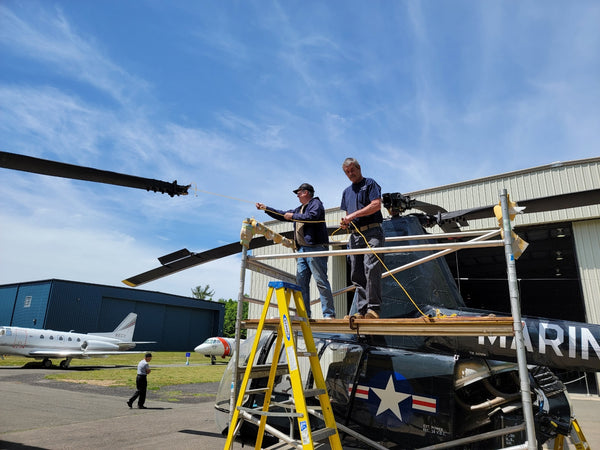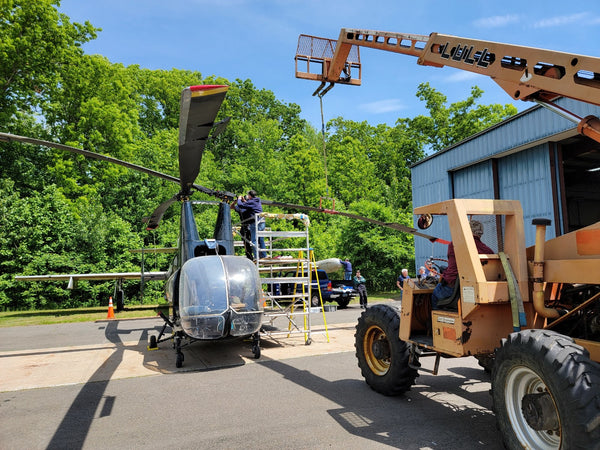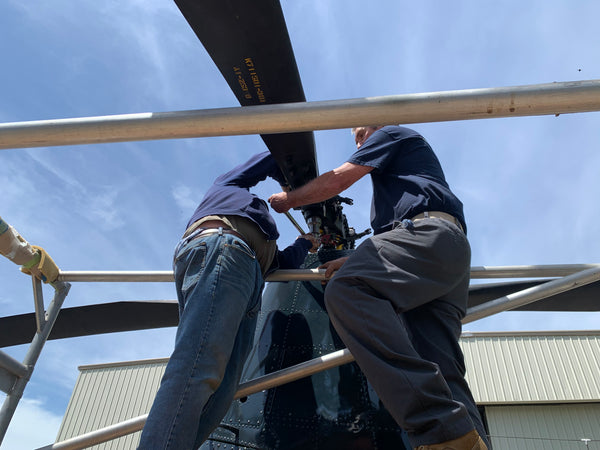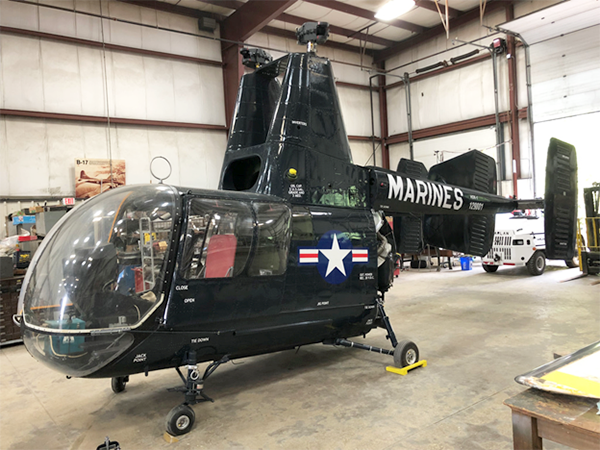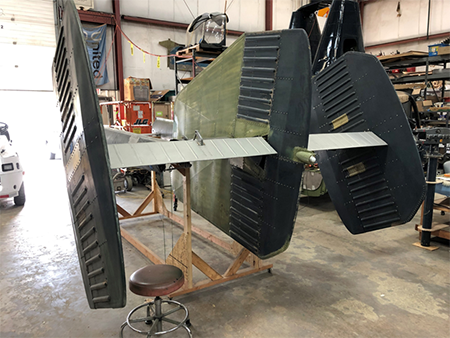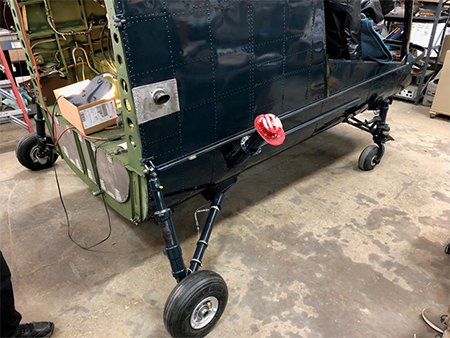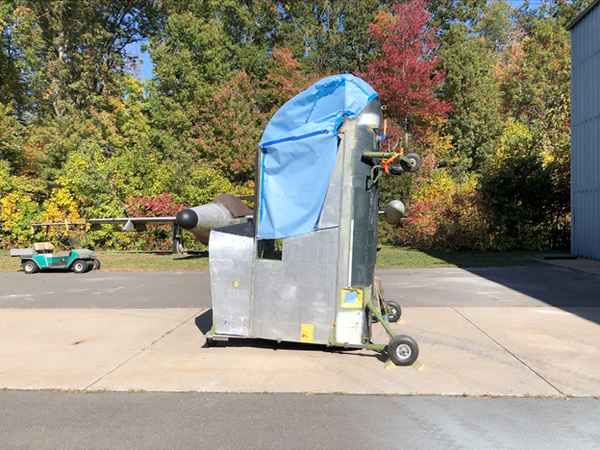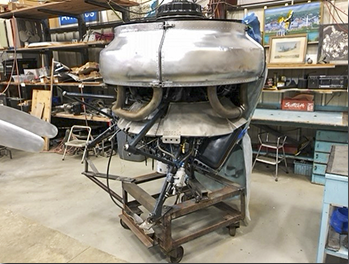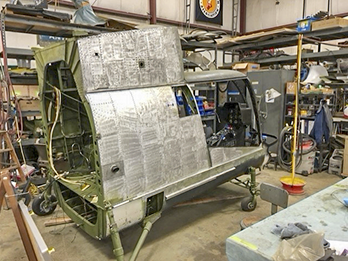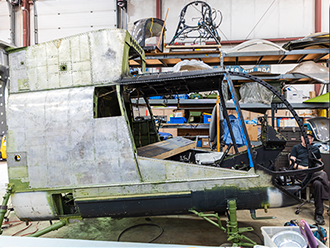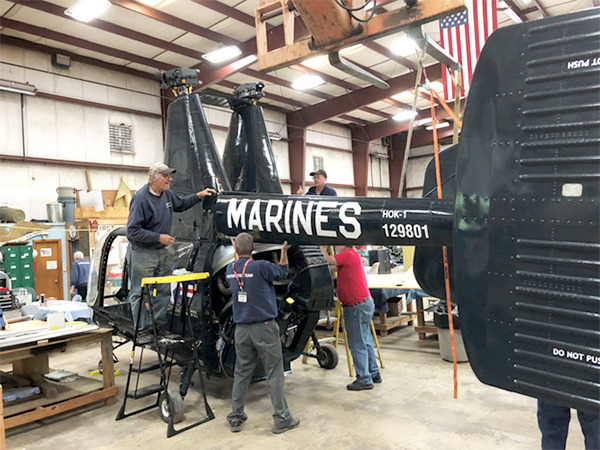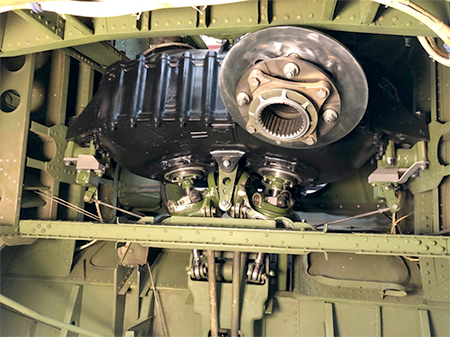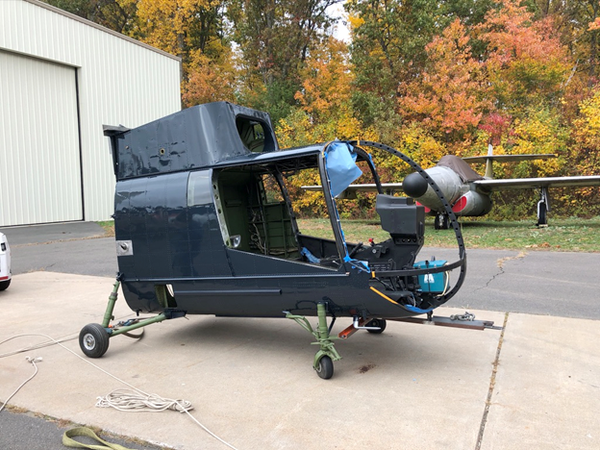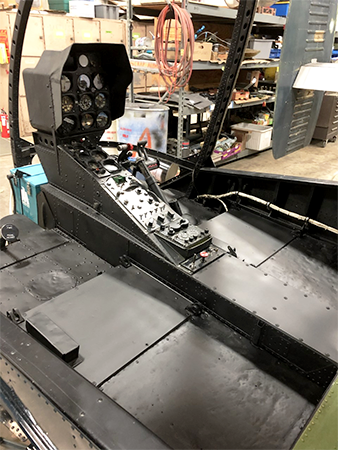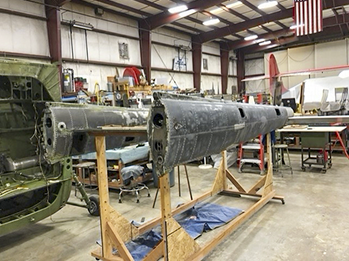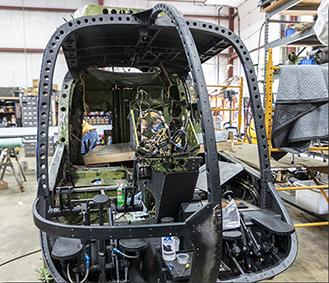RESTORATION DIARY
KAMAN HOK-1
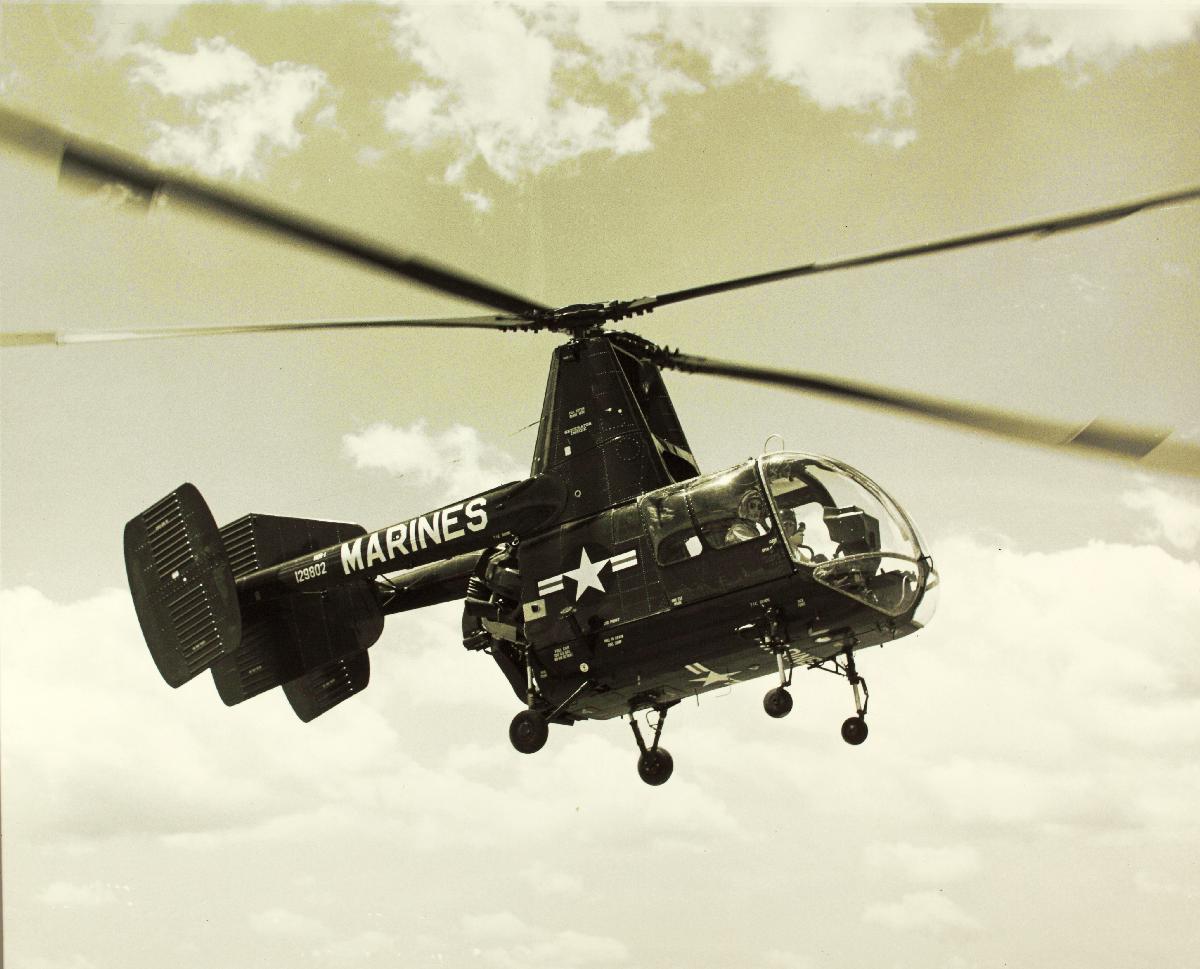
THE HISTORY
Kaman Corporation, headquartered in Bloomfield, has produced six types of helicopters. Three of them, the K-225, the HH-43F, and the SH-2F are on display here at the NEAM. Once completed, the HOK-1 will take its place in the Kaman collection representing the technological development between the K-225 and the HH-43F. It will also be the only U.S. Marine Corps aircraft in our large military collection.
Our HOK was built in October, 1953, the sixth of 83 of the type. It spent its days assigned to Kaman's Flight Test Department. By September, 1959 it had accumulated 838 hours of flight time. NEAM acquired the airplane in May, 1966. The HOK was in the museum hangar when the 1979 tornado destroyed many priceless aircraft and artifacts. It sustained some damage and has been in storage since May, 1980.
Rick Centore was assigned to lead the restoration volunteer team in bringing this aircraft back to its former glory. His connection with the HOK goes back to 1965. Fresh out of avionics school, he was assigned to Marine Observation Squadron 6 at Camp Pendleton, California. The squadron was in the process of transitioning to the Bell UH-1E Huey. But there were still a few HOKs, re-designated OH-43D in 1962, on the flight line. An HOK was the first aircraft Rick ever worked on.
